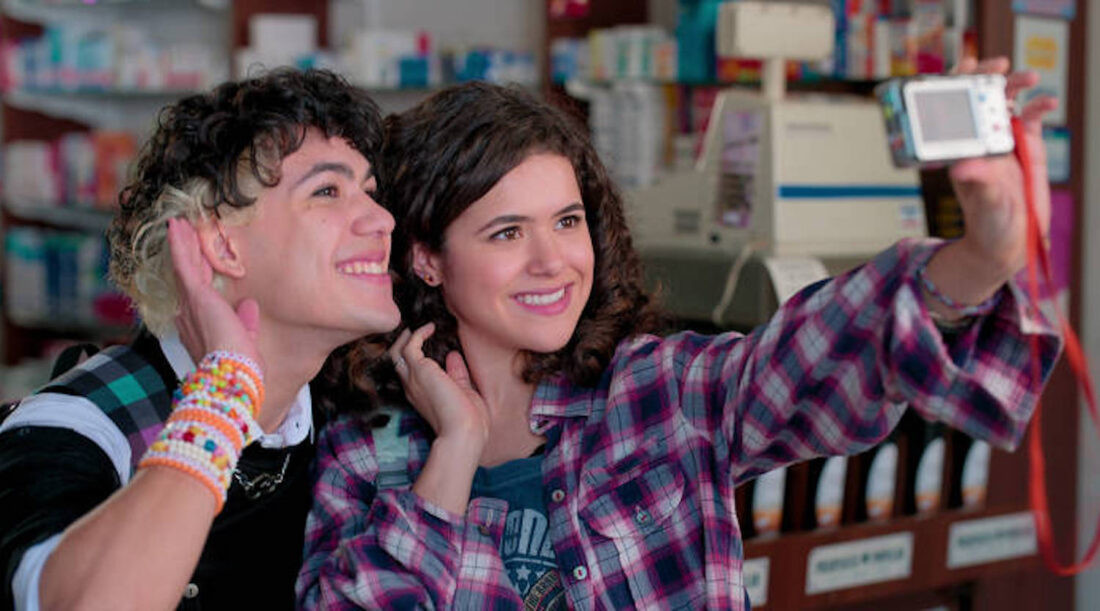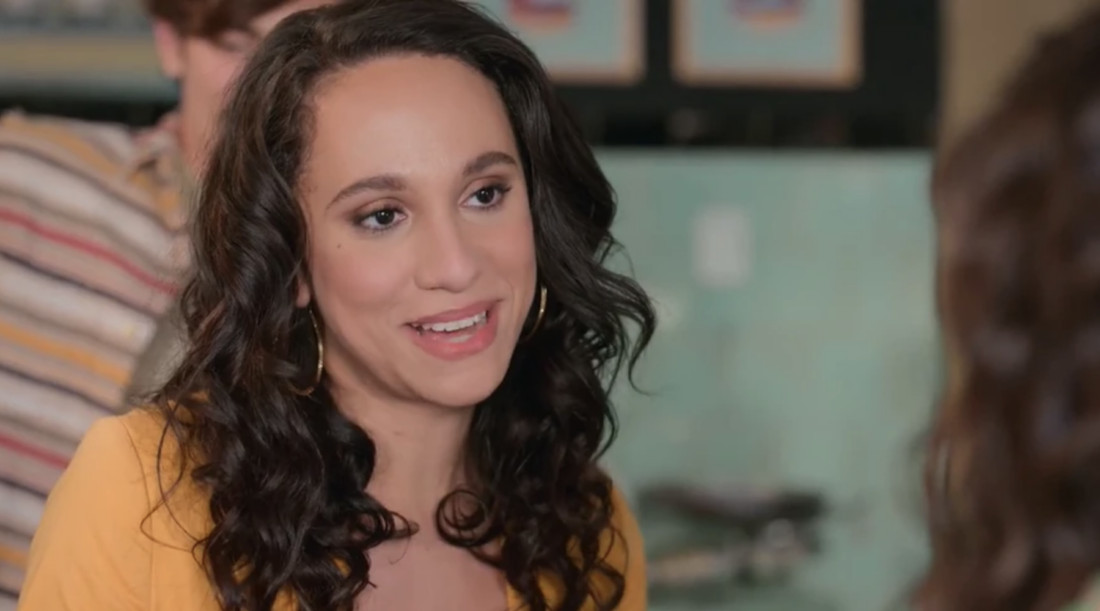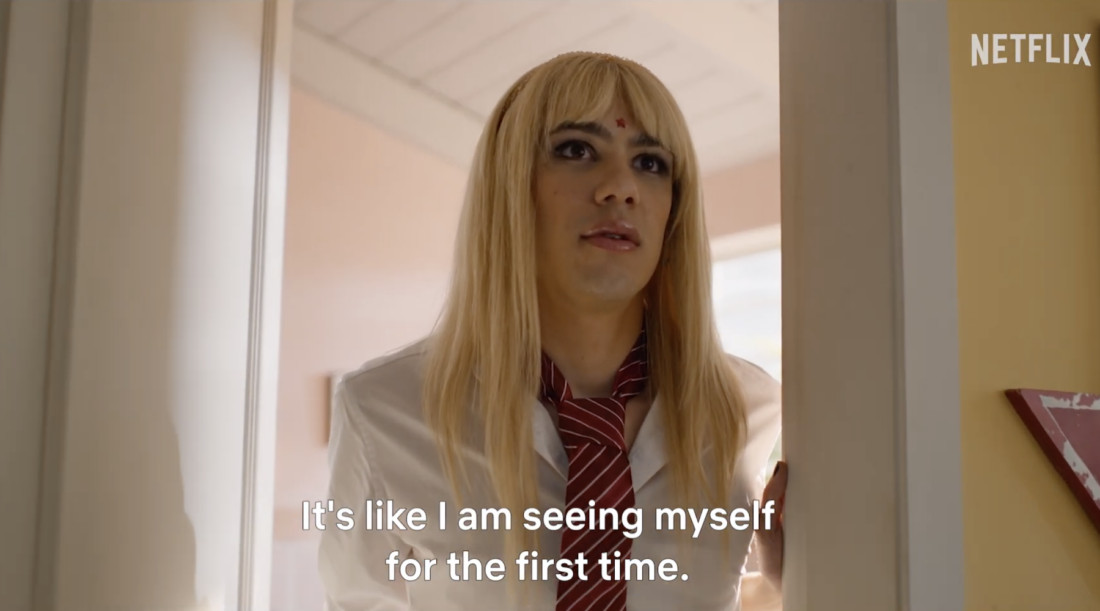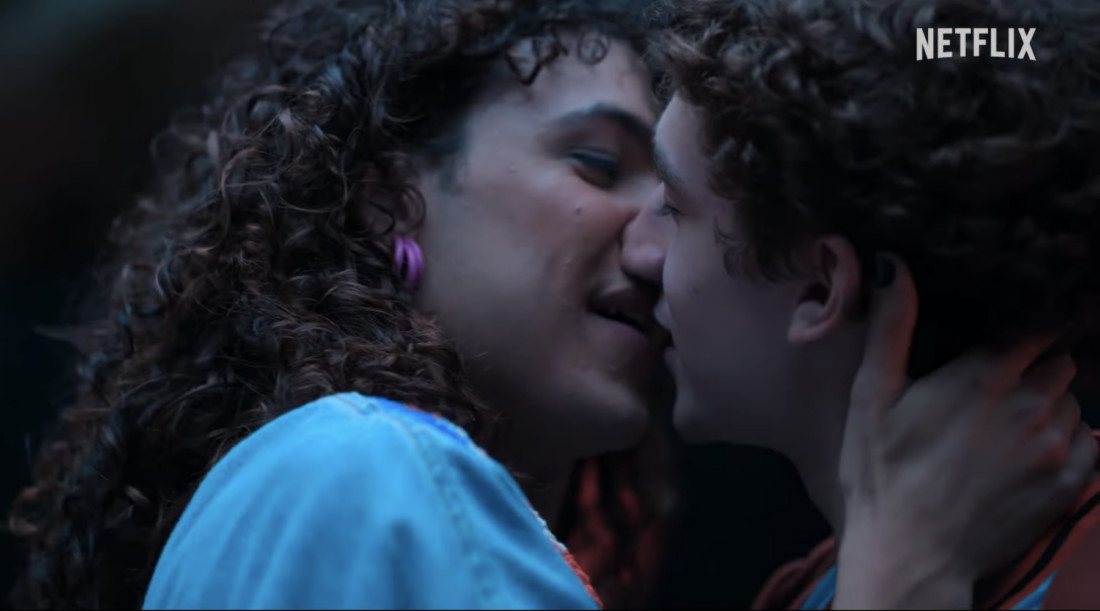Netflix is a treasure trove of international television, and for those seeking captivating genre shows with a unique flavour, Brazil has been delivering some under-the-radar gems. Among these is a standout Brazilian SF/fantasy series that recently concluded its third and final season, offering a delightful blend of time travel antics and heartfelt storytelling.
Enter Back to 15 (De Volta Aos 15), a show that introduces us to Anita, a thirty-year-old navigating the complexities of adulthood. Her life takes an unexpected turn when she revisits her teenage photoblog – a relic from the pre-Instagram era. Suddenly, Anita is catapulted back in time, finding herself in her fifteen-year-old body on her very first day of high school. This bizarre time-slip becomes a recurring phenomenon; each new photo posted to her retro photoblog sends her spiralling back to the present, but with each return, the present is subtly, and sometimes drastically, altered by her actions in the past. Driven by a desire to fix her friends’ lives and perhaps her own, Anita embarks on a series of trips to the past, learning that meddling with time has unforeseen consequences.
 Scene from the TV series
Scene from the TV series
Credit: Glaz Entretenimento / Netflix
The premise of Back to 15 embraces its inherent silliness, a quality that time travel narratives often possess. In many ways, this Brazilian Time Traveller Show evokes a nostalgic charm reminiscent of the kind of series that were once staples of networks like The CW or Disney Channel, think Kyle XY. It strikes a balance between lighthearted fun and tackling relevant social issues such as bullying, toxic masculinity, and even gentrification, all woven into the fabric of its time-bending plot.
At the heart of Back to 15 is Anita’s endearing best friend, Camila, a trans girl whose journey of self-discovery is portrayed with remarkable sensitivity and authenticity. Adding to the show’s genuine representation, Nila, the actress who plays teenage Camila, was undergoing her own transition during filming. Furthermore, Alice Marcone, a trans actor and writer who portrays the adult Camila, contributed her talents to the writing room, penning two episodes in the first season. To delve deeper into the making of this compelling character and show, interviews were conducted with both Nila and Alice Marcone, as well as Gautier Lee, a writer who joined the series in its later seasons.
From Book to Screen: Adapting “Back to 15”
Back to 15 is adapted from a book series by Brazilian author Bruna Viera. Alice Marcone was involved in the show’s development from its inception. While Marcone is both an actor and writer, she identifies primarily as a screenwriter, noting the scarcity of acting roles that resonate with her.
In the original books, Camila is a cisgender, minor character. However, Marcone and show creator Janaína Tokitaka made a pivotal decision early in the adaptation process: to expand Camila’s role and reimagine her as a trans character. Marcone explained, “Since Netflix wanted to incorporate contemporary themes into the adaptation, we felt that reimagining Anita’s best friend as a trans person would be meaningful.”
Marcone’s involvement deepened when she auditioned for and won the role of adult Camila. “Camila’s story is deeply personal to me, and much of it draws from my own experiences,” Marcone shared. The parallels between Marcone and Camila extend beyond their shared identity; Camila, like Marcone, is a writer and a psychology student in college.
Beyond Representation: Camila’s Multifaceted Character
 Scene from the TV series
Scene from the TV series
Credit: Glaz Entretenimento / Netflix
Nila, cast as teenage Camila, found an immediate connection with Alice Marcone. They discovered shared visions for Camila and forged a close bond, even planning future collaborations. Nila began embodying Camila at a time when she was personally exploring her own trans identity. During the second season’s filming, Nila changed her name to Nila and further embraced her transition. These parallel journeys enriched Nila’s portrayal of Camila, and her conversations with Marcone shaped the character’s development.
Marcone elaborated on the writers’ approach to Camila’s character in the first season. They aimed to depict “how the lack of LGBTQIA+ representation in media and society can hinder self-discovery for transgender individuals.” In season one, Camila is presented pre-transition, using an “emo” persona as a veiled expression of her femininity. Season two marks teenage Camila’s transition. Marcone emphasized the importance of crafting “a coming-out arc that was positive and drama-free, showcasing the acceptance from family and friends that many trans people need but rarely see portrayed.”
Nila was keenly aware of avoiding the pitfall of reducing Camila to a stereotypical “trans character.” This intention is evident in the show’s nuanced portrayal. Camila is not solely defined by her trans identity; she is also an aspiring writer, crafting stories about a heroic witch and grappling with self-doubt about her writing abilities. (Intriguingly, in many future timelines Anita visits, Camila achieves her dream of becoming a successful fantasy author.)
“What I love most about building this character is that Camila’s conflicts, while informed by her experiences, are not solely limited to her being a trans woman,” Nila explained. Particularly in the third season, Camila faces more intricate challenges, including writer’s block and romantic entanglements. Nila hopes viewers will see Camila as “just another character who, like the others, is going through her own process of maturing.” She believes Back to 15 is “a very pioneering series in this regard.”
Nila highlights Camila’s broad appeal, anticipating that trans teenagers will connect with her journey and struggles. Camila’s core challenges, according to Nila, revolve around “loneliness, insecurity, and low self-esteem.” Witnessing Camila’s growth throughout the three seasons – reconciling with her family, finding love, and achieving self-acceptance – offers an inspiring narrative for anyone who has ever felt like an outsider, regardless of age or background.
Time Travel as a Tool for Self-Reflection
 Scene from the TV series
Scene from the TV series
Credit: Glaz Entretenimento / Netflix
Marcone reflects on the allure of time travel, noting its connection to our sense of nostalgia. However, Back to 15 cleverly uses time travel to reveal the imperfections of the past. Anita’s time-bending escapades are not just about altering personal history; they are also about confronting the societal issues that contributed to her adult problems. “Time travel stories help us reflect on who we are,” Marcone suggests, potentially leading to acceptance of the choices that have shaped us.
“Time travel can function like therapy,” Marcone adds. She draws a parallel between time travel narratives and the therapeutic process: “In therapy, revisiting and retelling the past is believed to reshape your present. This is the central idea in many time travel stories, including Back to 15. Anita’s journey involves revisiting key moments and helping herself and others evolve. The process of healing, growth, and self-improvement mirrors the therapeutic exploration of one’s past to create a better present and future.”
Gautier Lee, another writer on the show, emphasizes the theme of self-discovery in De Volta Aos 15. “We wanted to show how even in the most chaotic timelines, we can still become better people, find our community, and grow together.”
Lee cites Back to the Future as a significant influence, a nod that is explicitly referenced in season two. Other time travel narratives like Happy Death Day and Bryan Lee O’Malley’s Seconds also informed the show’s creative direction. When Lee co-directed a “Groundhog Day” style episode, she made sure to incorporate the quintessential “fun montage” inherent to time-loop stories. Drawing inspiration from superhero shows she enjoyed in her teens, such as The Flash and DC’s Legends of Tomorrow, Lee injected an “extra dose of fun” into the episode.
Embracing Queer Storylines
 Scene from the TV series
Scene from the TV series
Credit: Glaz Entretenimento / Netflix
While Camila appears to be the primary queer character in De Volta Aos 15‘s first season, season two sees a delightful expansion of LGBTQ+ representation. Anita’s sister, Luiza, embarks on a charming lesbian romance, and more queer characters populate the narrative.
This increased queer representation “came naturally to us,” explains Lee, who joined the writing team in the second season. A musician character, Bruna, possessed a guitar stolen from an ex-girlfriend, and the writers decided to make this ex a woman, establishing Bruna as lesbian. This storyline organically evolved into a romance between Bruna and Anita’s sister, Luiza. “We aimed to craft queer stories that felt as natural as any other teenage experience,” Lee states.
Marcone attributes the show’s lighthearted tone to Netflix’s desire for a “feel-good” series. Despite Marcone’s usual inclination towards darker genres like horror and thrillers, she appreciates how humor can make meaningful themes more accessible to a wider audience.
Lee, identifying as a Black non-binary dyke, believes that having queer and BIPOC writers in the writers’ room fostered a deeper understanding of “the beauty of being young, queer, and a bit confused by life, as any teenager is.” The writers prioritized portraying queer teenagers as teenagers first and foremost – making mistakes, rebelling, falling in love, and experiencing heartbreak. Lee points to De Volta Aos 15‘s success as Netflix’s top non-U.S. show for two consecutive weeks as evidence that diversity behind the camera leads to better, more resonant storytelling.
This article was originally published at Happy Dancing, Charlie Jane Anders’ newsletter, available on Buttondown.


